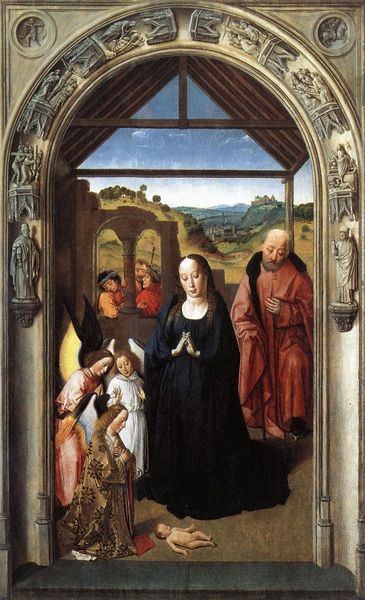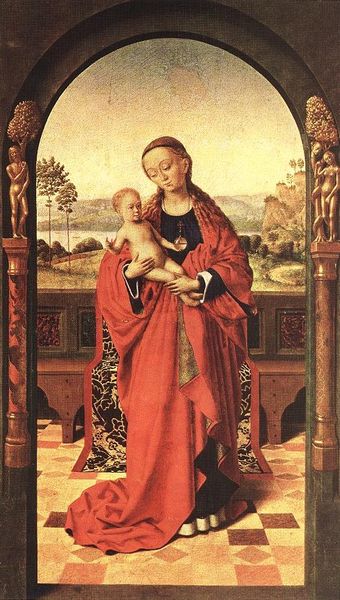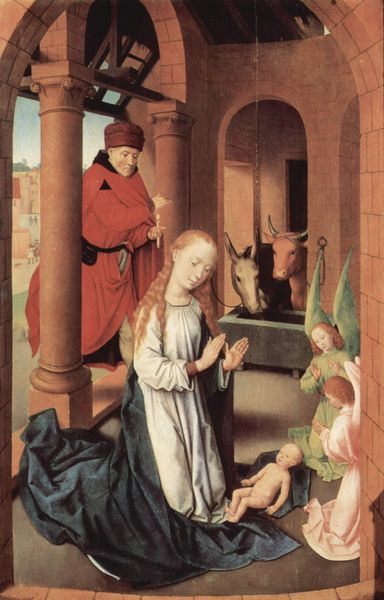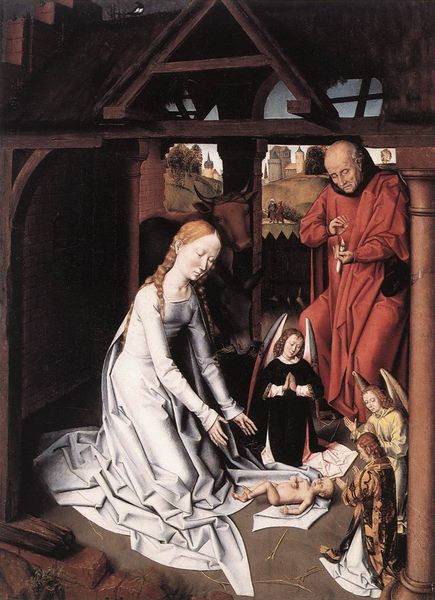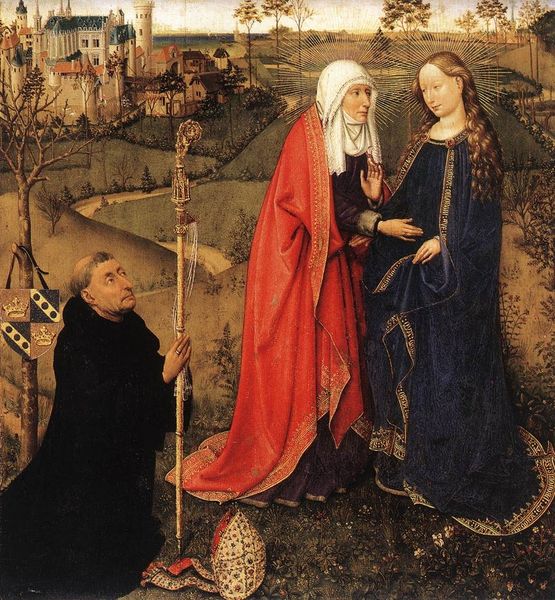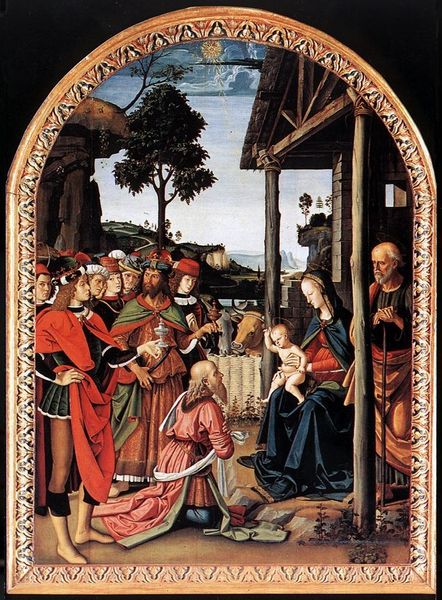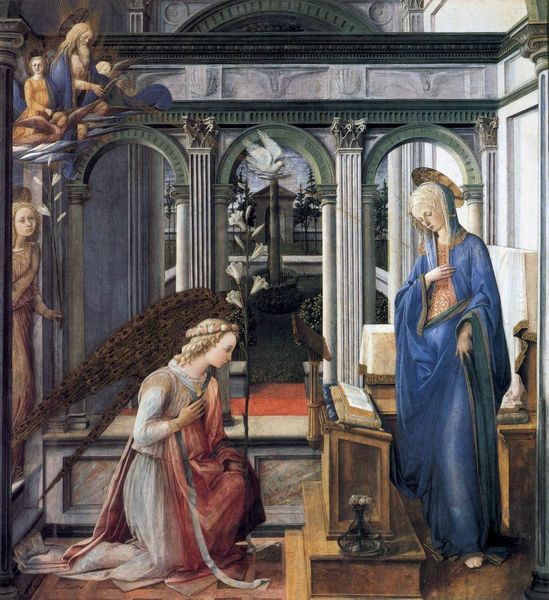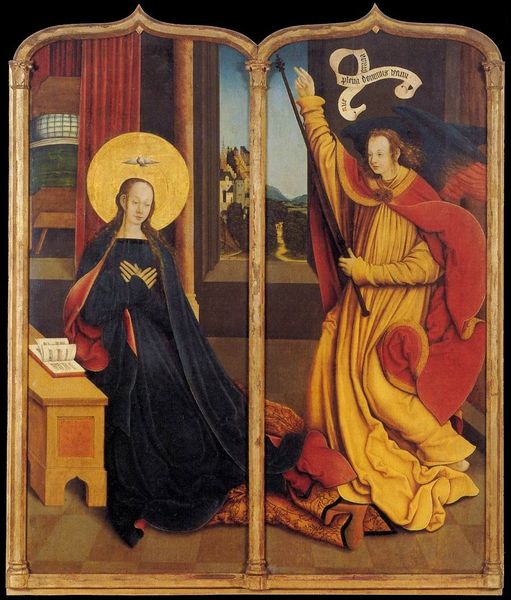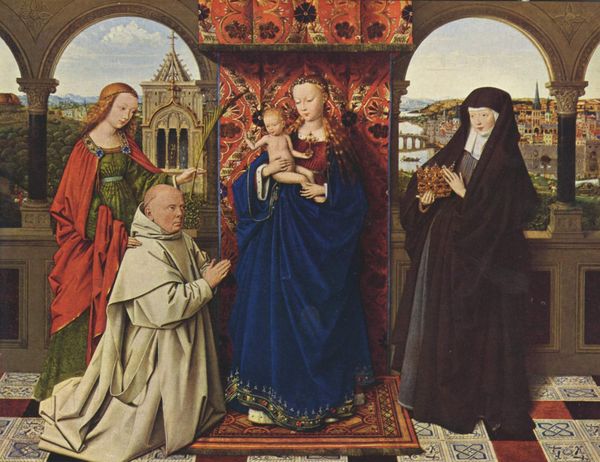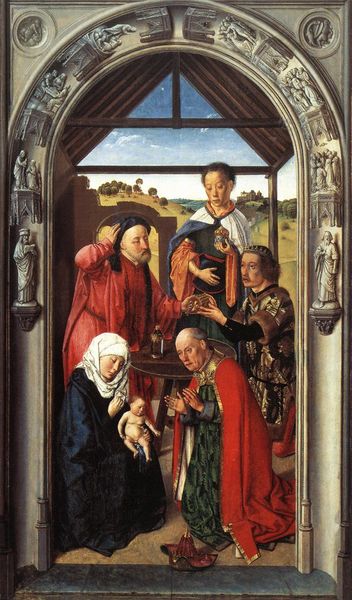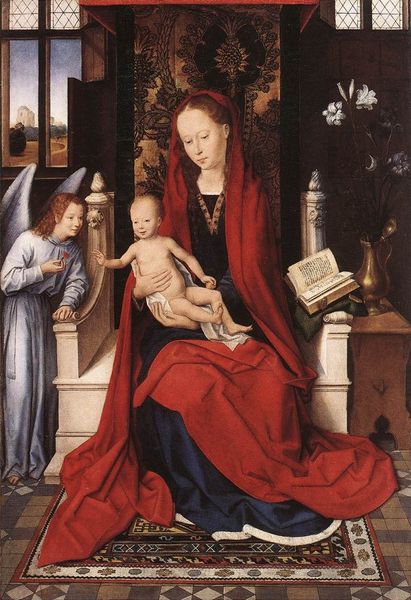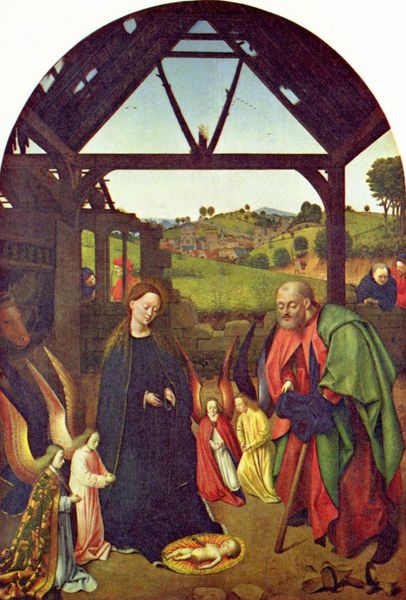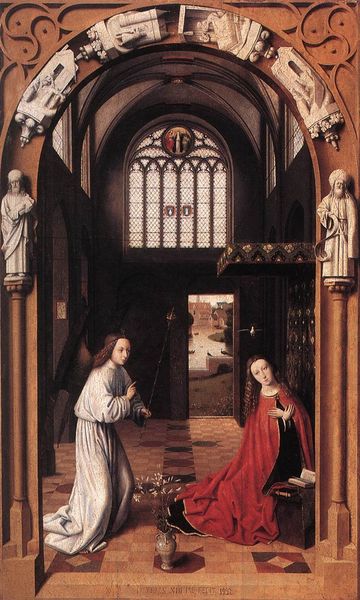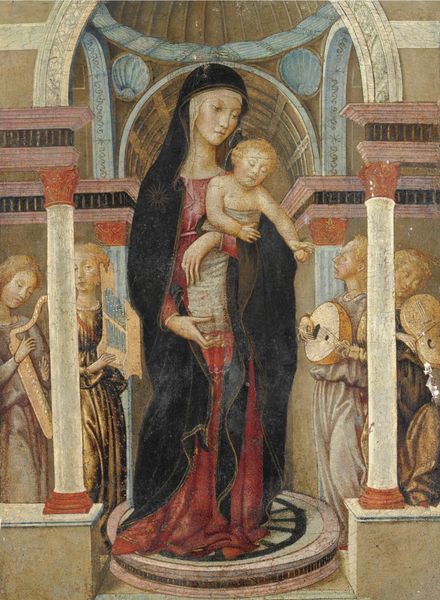
painting, oil-paint
#
painting
#
oil-paint
#
landscape
#
figuration
#
oil painting
#
christianity
#
painting painterly
#
history-painting
#
northern-renaissance
#
early-renaissance
#
virgin-mary
#
angel
Copyright: Public domain
Curator: Petrus Christus painted this panel, titled "Nativity," around 1452. It’s oil on wood, and currently residing here in Bruges. Editor: There's an undeniable strangeness to this scene. The enclosed space, almost theatrical, and the cool detachment of the figures give it a rather unsettling atmosphere. Curator: Indeed. The spatial complexities are striking. Notice how Christus frames the holy scene within an architectural arch, adorned with sculptures of Adam and Eve—the original sin against which Christ's birth is meant to atone. We have this simultaneity, this layering of narratives…the juxtaposition allows us to think about Christianity within broader concepts of creation and atonement. Editor: Right, but let's talk about the materiality itself. Look at how meticulously Christus renders textures—the roughhewn wood of the stable, the velvety sheen of Mary’s cloak. I’m interested in the way he builds up these layers of oil paint to create these hyper-realistic surfaces. It points to his knowledge of materials, commerce and craftsmanship within his cultural landscape in Bruges. Curator: I agree, and furthermore, note the placement of the Virgin. Here, her gaze isn't directed at the child, but downward. She is presented as an almost submissive figure, an interpretation of Mary that has resonated across patriarchal depictions of the Nativity over centuries. Considering current dialogues around gender roles and expectations, the way the female body and Mary is portrayed deserves analysis. Editor: The setting too, looks like labor: those aren't happy-go-lucky angels! The setting’s roughness throws the divine aspects of the narrative into sharp relief. The angels aren't simply rejoicing; they seem caught in a kind of heavenly mechanics—more like construction workers or something. Curator: And consider the location. Placing such a critical scene in a relatively quotidian landscape invites us to contemplate the intersection of the divine and the everyday, resonating, even today, with societal conversations on the secular and the spiritual. Editor: Christus’s meticulous labor really does transform humble materials into something powerful and strangely moving. This close look really illuminated its power. Curator: I leave with more questions about religious power structures! This exploration truly contextualizes and adds dimensions to our understanding of religious dogma, art history and social dialogue.
Comments
No comments
Be the first to comment and join the conversation on the ultimate creative platform.
